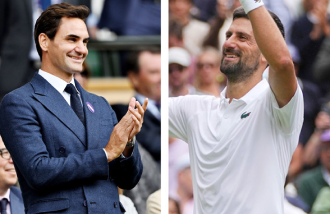Europe-South America `Soccer War`?
Europe-South America `Soccer War`?
Posted December. 08, 2003 22:52,
Europe vs. South America.
At the round of 16 in the 2003 World Youth Soccer Championship held on Tuesday and Wednesday in United Arab Emirates (UAE), the highlight will be the matches between Europe and South America. Three European teams, Spain, Slovakia and Ireland, will face South American favorites, Paraguay, Brazil, and Columbia, to absorb the global interests of both continents soccer pride. These matches give us the last chance to see the future of world soccer.
Power of Europe vs. Technique of South America
The focus of concern is the match on Tuesday between Slovakia and Brazil. These two countries have the most favor of their respective continents among the second round teams.
Brazil is regarded as a synonym for South America soccer, which is famous for its rhythmic soccer based on individual skills. Players are so splendidly managed that opponents are embarrassed with play tempo control reminiscent of a samba rhythm. Though Brazil has hurt its pride by losing to Australia 2-3 at the Group B match, it advanced to the round of 16 with a record of 1 win and 1 draw and 1 loss. Goal scorer Daniel Carvalho commands the attack line and the defensive line, which Aailton and Daniel lead, is strong.
Slovakias midfield and strikers space movement is lightning fast. Its attack style is side breaking by long passes and centering. Slovakia has plenty of promising players and is called the supply source of players for European club soccer along with Czech.
Led by tall attackers who are all over 180 cm tall, including Holosko Filip and Halenar Juraj, Slovakia advanced to the round of 16 by beating easy opponents, UAE and Panama of Group A. The defensive line composed of Brezinsky Milos and Cech Marek, who also are both over 180 cm tall, is stubborn.
Spain and Paraguay resembles each other in that they both play with accuracy and sharp passing. A difference is that Spanish players have both the typical European power skill and the South American individual skills. In the match between Columbia and Ireland, Columbia, led by tall and speedy strikers, is favored.
2003 Youth Soccer is Defensive Soccer.
80 goals have been scored in the tournaments 36 preliminary matches. This average of 2.2 goals per match is lower than the previous tournaments average of 2.87 goals per match. You can say that defensive soccer is now main stream.
Because of this tendency, players scoring has also dropped. Co-leaders in scoring, Stephen Elliot (Ireland), Ed Johnson (USA) and Leandro Fernandez, scored only three goals each. This pace is far from behind than that of Saviola (Argentina), last years leading scorer, who knocked in 11 goals, the tournament record.
Korean coach Park Sung-wha analyzed, Most teams are focusing on defense, not just our team. It might be a trend to not do too much beyond their abilities as the players are still young.
Jong-Koo Yang yjongk@donga.com




![[단독]전직의원 속속 합류하는 대통령실…이영호·배진교도 비서관에](https://dimg.donga.com/c/138/175/90/1/wps/NEWS/IMAGE/2025/07/09/131967216.1.jpg)


